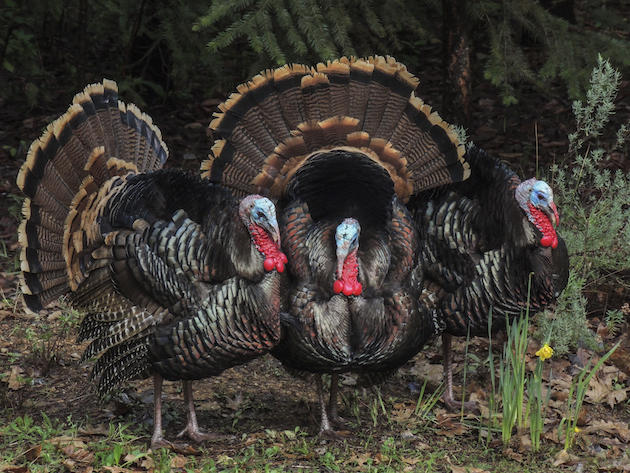Note: This article reflects the editor’s personal opinion.
Hunter safety should be second nature for 21st Century sportsmen. We know about safety measures our hunting forefathers couldn’t have dreamed of, like how blaze orange can’t be seen by deer but should still be broken up to avoid a random, solid blob moving through the woods. Hunter safety courses are required across the country, and outdoor television promotes the basics of firearm safety from muzzle direction to loading guns only after climbing safely into the deer stand.
Yet we have hunters hiding behind turkey silhouettes to try to sneak closer to gobbling toms.
I was recently searching the web when I saw a hunter using just this technique. He was crouched behind a decoy and crawling toward a turkey, one hand on the deke and the other on his shotgun.
The first lesson I was taught about turkey hunting was to not wear orange because turkeys could see it (and hunters might mistake it for red). The second, and far more vital, was to never, ever carry a bird on your back without covering its head. The bobbing mess of still-bright red, blue, and white was like literally painting a target on your back. Hunters are always supposed to make sure of their target before pulling the trigger, but its always better to be safe than sorry.
Even though I hunted private property most of the time, it was never truly private with our neighbors crossing over whenever they pleased. Who knew for sure if there were trespassers after a gobbler on my family’s land? If property boundaries didn’t concern another hunter, what were the chances he would wait to be sure of his target before filling my back full of #5s?
And here was a guy on video purposefully walking behind a full-strut “bird.” What if a careless hunter had seen him and took a shot?
How would that headline have read? With hunting under attack on every side, all day every day. Imagine the field day anti-hunters would have with that one.
Daniel Jackson wrote an article for the National Wild Turkey Federation on the subject of safety. Entitled “Mistaken for Game,” it provided a mental checklist for turkey hunting safety. One point Jackson pointed out was making sure you don’t mistake others for a turkey and try to not be mistaken yourself.
“Don’t dress or act like a game animal,” Jackson wrote. “If a turkey hunter wears red, white or blue as a part of their clothing, other turkey hunters could mistake his or her clothes for the head of a tom.”
The sad truth is some hunters just don’t pay attention.
“It sounds like a stupid mistake, but in 2005, the National Wild Turkey Federation’s Turkey Hunting Safety Task Force found failing to identify the target is the most common hunting incident involving a gun,” Jackson wrote.
I could get on board if that was the only way to hunt birds and could be done safely. A silhouette decoy is often used to great effect for elk, deer, pronghorn, and other species. The difference lies in the terrain. You literally can see for miles in western states. A hunter would have to be dead ahead to see just the silhouette decoy and not the hunter behind it, and even then the chances would be slim based on hunter densities. A southeastern patch of woods, filled to the brim with hunters, is another thing entirely.
There are so many realistic decoys on the market it’s almost tempting to buy them and forget about the real thing altogether. Calls of all kinds can be bought depending on preference and ability. Camo is so detailed it’s almost like printing a photograph on cloth. There’s no reason to pull this kind of stuff in the turkey woods. If that’s the only recourse you have, you’re not calling, decoying, or camouflaging yourself properly in the first place.
Maybe I’m wrong (it’s certainly happened before). My advice: pick a tree, settle in, and use the tight chokes and excellent lead loads available to kill a bird. Running-and-gunning is great for closing distances and locating birds, but never purposefully hide behind the decoy.
And make sure of what you’re aiming at.

